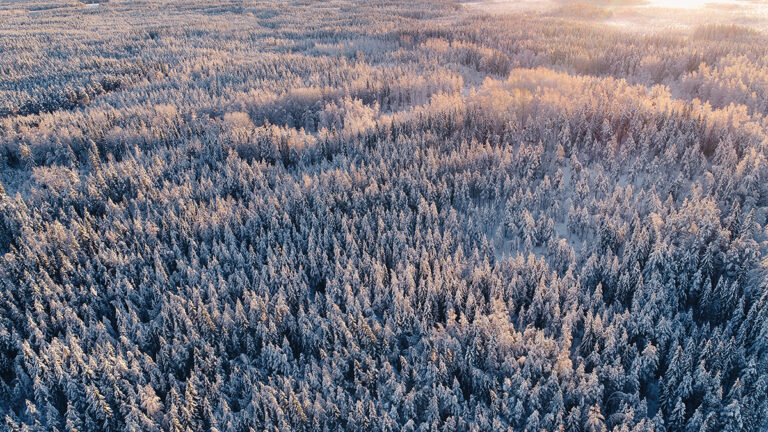Researchers from the Finnish Meteorological Institute (FMI) have investigated whether particles forming above boreal forests can help in the making of cirrus clouds and if the water content in the particles affects this property. The results suggest that secondary organic aerosols from boreal forests do not facilitate the formation of cirrus clouds.
The formation of ice crystals in cirrus clouds is triggered by the presence of aerosols – small particles in suspension in the atmosphere. Aerosols come from multiple sources, for example dust, fly ash, sea spray or pollen, but they can also be formed (secondary aerosols) in the atmosphere by the condensation of different vapors of natural or anthropogenic origin.
Above boreal forests, secondary organic aerosol (SOA) particles are formed from tree emissions. Investigating the role of these particles in the formation of high altitude clouds is key to better understanding the properties of clouds in boreal environments, such as Finland.
In the FMI’s project, researchers studied whether the cirrus clouds form more easily in the presence of SOA particles. The laboratory-based research was conducted in collaboration with University of Eastern Finland’s Aerosol Physics Research Group.
Researchers made boreal-forest-like particles from various precursors (α-pinene, pine needle oil, and real tree emissions) with different water content: dry (≤10% RH) or wet (40% RH), to mimic what happens over boreal forests. These particles were exposed to cirrus cloud conditions to measure whether they help to form ice crystals.
The researchers found that only when the water content of the particles is low these particles can form an ice crystal, and even then they are not more effective than a grain of salt that forms a solution droplet which then freezes (homogeneous nucleation). The research reveals that SOA from boreal forests do not facilitate the formation of cirrus clouds.
To read the full study, click here.



